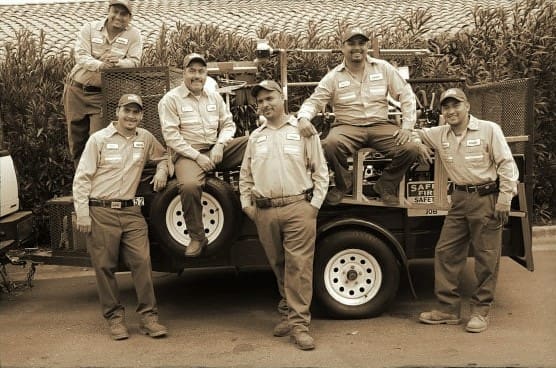
It’s natural for your employees to sometimes lose motivation, but it is your job as the company leader to step up and provide the right morale boost for your team.
“It is our responsibility as leaders/coaches/managers to be aware of how our employees are feeling and intervene when we can to lift them up,” says Peter Novak, president and CEO of Serpico Landscaping, Inc., based in Hayward, California. “It can be as simple as just a thank you or a kind word in recognition for their work that can make a difference.”
Doug Delano, LIC, co-owner of Level Green Landscaping, based in Upper Marlboro, Maryland, believes that almost every time he interacts with his employees he needs to seek to leave them on an upbeat note.
Causes of Morale Drops
Delano says employees’ morale tends to drop when they are yelled at for making mistakes, when they do a good job and are not recognized for it, or are not acknowledged for going above and beyond the normal effort. Novak agrees that most employees disengage when they do not feel appreciated.
“This can stem from poor communication, unrealistic goals, poor scheduling, lack of recognition, micromanagement, or too large a workload,” Novak says. “This can vary greatly from one co-worker to the next, but I think we all get down a bit when we get negative feedback from a client.”
Novak says it can be deflating to employees if you do not teach them to view criticism through the lens of opportunity.
Marisa Gora, owner of Kemora Landscapes, based in Chicago, Illinois, says her employees can struggle with motivation during the heat of the season and everyone is close to a point of feeling overloaded. Similarly, Delano says his employees can struggle during a large snow event.
“There is so much pressure from all sides to keep our employees safe and well-rested and the pressure from the clients to get the work done,” Delano says. “The other times are the normal peak seasons, like spring and fall when so much is happening and our crews are overloaded with work and it is difficult to quickly solve client problems.”
Novak says while employees can experience low morale at any time for various reasons, the summer is actually the most exciting season for his staff due to all the opportunities to accomplish projects, learn new skills and share in growing the company.
Gora says this year in particular has increased stress levels as her staff has navigated concerns over the coronavirus and dealing with local riots and protests as well.
“We had a couple of mornings where people came in and were freaked out asking ‘Are we working?’ ‘What do we do?’ ‘Should we be doing something else?’” she says. “We were checking the job sites where people were going that day to see if we’re heading into anywhere that seemed precarious.”
Methods of Motivation

For Gora’s team, providing occasional long weekends and giving pep talks helps boost her employees’ motivation.
“I try to make sure that we only do overtime for a certain period of time and then cut back the hours and then by the time we get to August I do two four-day weeks in the month so every other Friday we’ll have Friday off,” Gora says.
She says she’ll guarantee them a full 40 hours so their hourly crews don’t feel they’re at a disadvantage. She says her employees look forward to having that extra day off. She plans to keep her office staff working from home during this slow period.
“I’ve had a couple conversations already with them,” Gora says. “I really want everybody to take this time at home to be reenergizing and to be personally beneficial.”
She says while staying home during the winter in Chicago has the potential to cause people to get depressed, her employees are excited to be home for a while.
“I’ve talked to them about goals for each of them, what kind of goals personally can they do over the next couple of months to feel like they’ve got a purpose and feel good about this time,” Gora says. “Even though we’re looking forward to the downtime, there’s a potential for it to feel oppressive.”
Delano says it’s been harder to interact with his employees as much as he normally does, but he has been conducting a lot of internet video meetings. Previously, he would go to lunch with each member of his management team twice per year.
“This served to find out how they were doing and let me get a peek into their personal life,” he says.
Novak says he keeps his staff motivated by providing feedback on a regular basis and recognizing their accomplishments.
“Requesting feedback shows your direct reports that you also care about their opinions and ideas,” he says. “Positive verbal reinforcement is one of the most common ways we do this. It is very important to keep them informed, and feeling that they are an integral part of the team.”
What Drives Your Team
While it is your job to lift your team’s spirits from time to time, it’s important to seek out employees that have an intrinsic drive to do their best.
“I have always believed that what drives most people is an internal drive and desire to do well,” Delano says. “You have to find people who have that trait and hire them.”
Novak says most employees want to feel they are an integral part of the team and achieve success in their work.
“I believe it is leadership’s responsibility to create the environment where our co-workers feel 100 percent supported to unleash their intrinsic drive to do their very best at their jobs,” Novak says. “A culture of autonomy gives everyone an opportunity to stretch their wings and see how high they can fly…and the support comes into the picture when failures happen. Failure is part of success in our view and learning is the gold that is mined by the act of failing. We strive for a learning culture constantly.”
Gora says her staff takes a lot of pride in what they do so she has made sure to share the praise she receives from clients with her crews.
“I personally have tried to make a point of being giving more recognition on a regular basis,” Gora says. “I’ve seen how they respond to the customers complimenting them and how much they feel good about it. I feel it’s really important that gets recognized more.”
Because everyone is different, there is no one size that fits all when it comes to how to motivate your team. Gora says personally connecting with each person on the staff will change your approach to motivating them.
“I try to connect with each person on an individual basis rather than just have a blanket formula for motivation,” she says.
Novak adds that by building relationships with your employees you gain insight into what makes them tick and keep them engaged.
“We embrace the golden rule,” Novak says. “In the end, we are all people with emotions, and when someone puts effort into knowing our quirks, it sends the message they care. We all care about each other’s successes and that is what makes our team a strong one.”

